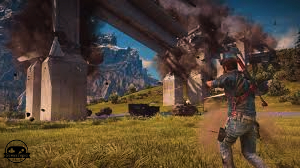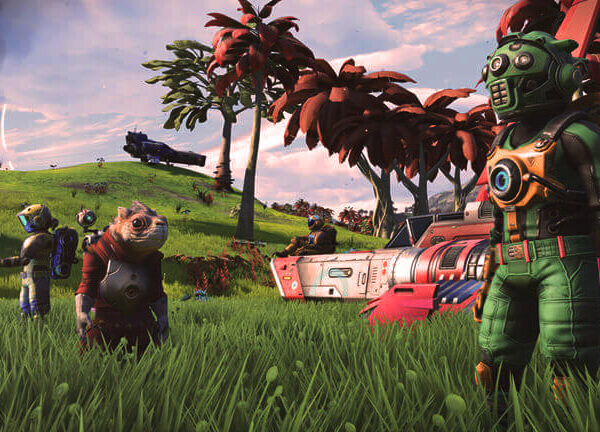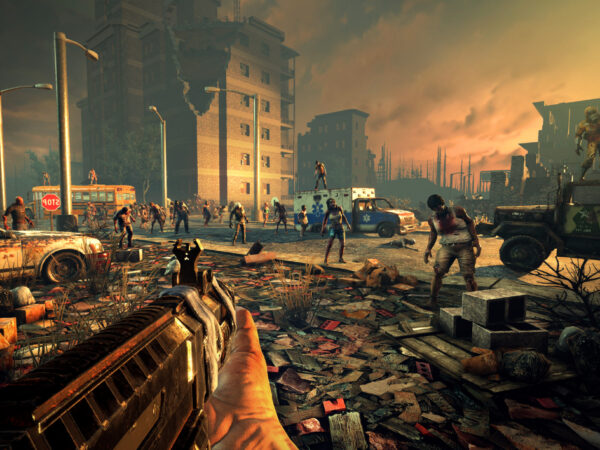Beyond the Boundaries: The Freedom of Sandbox Games
Exploring the Limitless Possibilities: The Endless Freedom of Sandbox Games

Sandbox games have revolutionized the gaming industry by offering players an unparalleled level of freedom and endless possibilities. From constructing elaborate virtual worlds to embarking on epic quests, players have the power to shape their own experiences. Unlike traditional linear games, sandbox games provide an open-ended gameplay that allows for exploration, creativity, and decision-making.
One of the key features that sets sandbox games apart is the ability for players to have complete agency over their actions. Whether it’s building a towering castle, creating intricate redstone contraptions, or embarking on a perilous journey, players have the freedom to pursue their own goals and determine their own path. This level of autonomy not only fuels creativity and personal expression but also fosters a deeper sense of immersion and engagement. In sandbox games, the boundaries are lifted, and players are free to unleash their imagination in a virtual world without limitations.
The Evolution of Sandbox Games: From Simple Sandboxes to Vast Virtual Worlds

In the early days of gaming, sandbox games were limited to simple sandboxes where players could build basic structures and explore small virtual worlds. These games offered limited freedom for players to unleash their creativity and often had linear gameplay with predetermined objectives. However, as technology advanced and game design evolved, sandbox games transformed into vast virtual worlds that offered endless possibilities.
With the advent of more powerful consoles and computers, game developers began to push the boundaries of sandbox game design. They introduced open-world environments with huge landscapes to explore, filled with diverse and immersive content. Players were given the freedom to shape their own narratives and determine their own paths, making each playthrough a unique and personalized experience. The concept of player agency became integral to sandbox game design, empowering players to make meaningful choices and influencing the world around them.
Unleashing Your Creativity: The Power of Player Agency in Sandbox Games

Sandbox games have paved the way for a revolution in gaming, offering players an unparalleled level of freedom and agency. At the heart of this experience lies the power of player agency, allowing individuals to unleash their creativity and shape their own gaming worlds. Unlike traditional linear games that follow predetermined paths, sandbox games prioritize open-ended gameplay and encourage players to make meaningful choices that directly impact their experience.
Within these virtual playgrounds, players are given the tools to build, create, and explore at their own pace and in their own unique style. With the ability to manipulate the environment, customize characters, and even develop storylines, the possibilities are truly limitless. Whether constructing elaborate structures, designing intricate landscapes, or crafting intricate narratives, players are empowered to express themselves in ways that extend far beyond the boundaries of the game itself. This level of player agency not only fosters creativity but also fosters a sense of ownership and investment in the virtual world, making the gaming experience all the more immersive and personal.
Breaking the Mold: How Sandbox Games Challenge Traditional Game Design

Sandbox games have revolutionized the traditional concept of game design. Unlike linear games that follow a predetermined path, sandbox games provide players with the freedom to explore, experiment, and create their own experiences within the virtual world. This departure from the conventional game structure challenges the established norms and allows players to break the mold of traditional game design. With sandbox games, players are not merely passive participants but active creators, shaping the game world according to their preferences and ideas. This unique approach empowers players to think outside the box and challenge the boundaries set by traditional game design, fostering a sense of ownership and creativity that enhances the overall gaming experience.
The Joy of Discovery: The Thrill of Exploration in Sandbox Games

Exploring a vast virtual world, navigating through uncharted territories, and stumbling upon hidden treasures – the joy of discovery in sandbox games is an unparalleled experience for gamers. Unlike traditional linear games, sandbox games provide players with the freedom to roam and explore at their own pace, allowing for endless opportunities to uncover the unknown.
One of the most thrilling aspects of exploration in sandbox games is the element of surprise. As players venture into unexplored territories, they never know what they may encounter – a hidden cave with valuable loot, a breathtaking view from the top of a towering mountain, or even a secret passage leading to a new realm. This sense of unpredictability keeps players on the edge of their seats, eager to uncover the next great discovery. Whether it’s stumbling upon a hidden village or stumbling upon a breathtaking natural wonder, the joy of discovery never fades in sandbox games.
In sandbox games, exploration goes beyond just uncovering hidden secrets – it also presents opportunities for personal growth and character development. As players navigate through diverse landscapes and encounter various challenges, they learn to adapt and strategize, honing their problem-solving skills along the way. The thrill of exploration pushes players to think creatively, finding unique ways to overcome obstacles and forge their own paths. With every new discovery, players not only gain a sense of accomplishment but also enhance their understanding of the game’s mechanics and systems. The joy of exploration in sandbox games is not limited to the virtual world – it extends to the development of the player themselves.
Building Dreams: The Art of Construction and Design in Sandbox Games

One of the most fascinating aspects of sandbox games is the opportunity for players to unleash their creativity and build their own virtual dreams. These games provide a platform for players to become architects, engineers, and designers, allowing them to construct intricate structures and shape their own virtual worlds. From towering skyscrapers to sprawling landscapes, the art of construction and design in sandbox games offers a limitless canvas for players to imagine, plan, and bring their visions to life.
In sandbox games, players are not limited by predetermined objectives or linear gameplay. Instead, they have the freedom to experiment with different materials, structures, and designs, giving rise to unique creations that reflect their individual style and imagination. Whether it’s building a majestic castle, a futuristic city, or a cozy cottage nestled in the woods, the possibilities are only bound by the player’s creativity. The art of construction and design in sandbox games empowers players to take ownership of their creations and gives them a sense of accomplishment as they witness their virtual dreams take shape before their eyes.
Forging Your Own Path: The Nonlinear Gameplay of Sandbox Games

In sandbox games, players are given the unique opportunity to forge their own path and create their own narrative. Unlike linear games that follow a predetermined storyline, sandbox games offer a nonlinear gameplay experience that empowers players to make their own choices and shape their own destiny within the game world. This freedom to explore, experiment, and express oneself is what sets sandbox games apart and attracts players from all walks of life.
One of the key elements of nonlinear gameplay in sandbox games is the absence of a set goal or objective. Instead, players are encouraged to set their own goals and pursue them at their own pace. Whether it’s building an intricate castle, embarking on a grand adventure, or simply enjoying the beauty of the virtual world, the possibilities are endless. This open-ended nature of sandbox games allows players to engage with the game on a personal level, making every playthrough a unique experience tailored to their individual preferences and desires.
The Social Aspect: Collaborating and Interacting with Others in Sandbox Games

Sandbox games have revolutionized the way people collaborate and interact with each other in virtual worlds. These games provide a unique platform for players to come together and engage in various activities, building communities, and fostering social connections. Whether it’s creating and sharing content, engaging in cooperative gameplay, or participating in large-scale events, the social aspect of sandbox games offers endless opportunities for players to connect and collaborate.
One of the key features that enhance collaboration in sandbox games is the ability to create and share content. Players can design their own game levels, build intricate structures, or even develop entire virtual worlds. This freedom allows for endless creativity and encourages players to collaborate with others, pooling their skills and ideas to create something truly extraordinary. The shared experience of building and designing together fosters a sense of teamwork and camaraderie, as players work towards a common goal while expressing their individuality. Additionally, platforms such as online forums or dedicated in-game communities further facilitate collaboration by providing spaces for players to share their creations, seek feedback, or even team up for larger projects. The social aspect of sandbox games not only encourages collaboration but also amplifies the joy of creation through the power of collective effort.
From Virtual to Reality: The Influence of Sandbox Games on Real-World Creativity

Video games have become an influential medium in shaping our society and culture, and sandbox games in particular have had a significant impact on real-world creativity. These virtual environments provide players with a blank canvas to create, explore, and experiment with their ideas. The freedom and agency offered in sandbox games allow players to unleash their imagination and translate their virtual experiences into real-world creative endeavors.
One of the ways sandbox games influence real-world creativity is by fostering problem-solving skills. These games often present players with complex challenges and puzzles that require innovative thinking and creative solutions. As players navigate through these virtual landscapes, they learn to think outside the box, adapt to changing circumstances, and overcome obstacles. The problem-solving skills developed in the sandbox game environment can then be applied to real-world situations, empowering individuals to tackle challenges with a fresh perspective and find unique solutions. Whether it’s designing a new product, solving a complex math problem, or finding creative ways to address social issues, the problem-solving skills honed in sandbox games can have a tangible impact on real-world creativity.
A World Without Boundaries: The Endless Potential of Sandbox Games for Education

Sandbox games have emerged as a powerful tool for education, offering a world without boundaries to foster endless possibilities for learning. These immersive virtual environments provide students with a unique platform to explore, experiment, and create, all within the confines of a digital space. The potential of sandbox games for education knows no limits, as they allow students to engage in hands-on, interactive experiences that promote critical thinking, problem-solving, and collaboration.
One of the key advantages of sandbox games in education lies in their ability to promote experiential learning. By allowing students to actively participate in the learning process, these games empower them to take control of their own education. In sandbox games, students become the architects of their learning journey, where they can explore various concepts and ideas at their own pace. This freedom encourages creativity and enhances motivation, as students are able to approach tasks in a way that aligns with their individual interests and learning styles. As a result, sandbox games create an environment where students can truly immerse themselves in the subject matter, fostering a deeper understanding and retention of knowledge.










